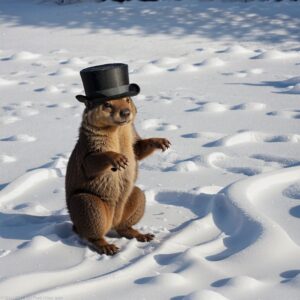On February 2, 1887, the quiet town of Punxsutawney, Pennsylvania, became the birthplace of a whimsical tradition that would capture the imagination of generations to come: Groundhog Day. This lighthearted event, centered around a groundhog named Punxsutawney Phil, involves a curious ritual to predict the weather. According to folklore, if Phil sees his shadow, it means six more weeks of winter. If not, spring is just around the corner.
The inaugural Groundhog Day was the brainchild of a local newspaper editor, Clymer Freas, who combined German weather lore with a community celebration. In German tradition, a hedgehog was used to forecast weather on Candlemas Day, a Christian holiday. In America, where hedgehogs were scarce, the groundhog took center stage. Punxsutawney’s rolling hills and abundant groundhog population made it the perfect setting for the unique tradition.
Though it began as a humble local event, Groundhog Day has since grown into a national phenomenon. Each year, thousands of people gather at Gobbler’s Knob in Punxsutawney to witness Phil’s prediction, and millions more tune in to watch the spectacle unfold. The tradition is a blend of fun, folklore, and a longing for spring—a reminder of humanity’s connection to nature and the changing seasons.
Groundhog Day has also inspired popular culture, most notably the 1993 film of the same name, which added layers of philosophical meaning to the annual event. What started as a quirky celebration now serves as a symbol of hope, renewal, and community spirit, reminding us to embrace life’s small joys and traditions.

